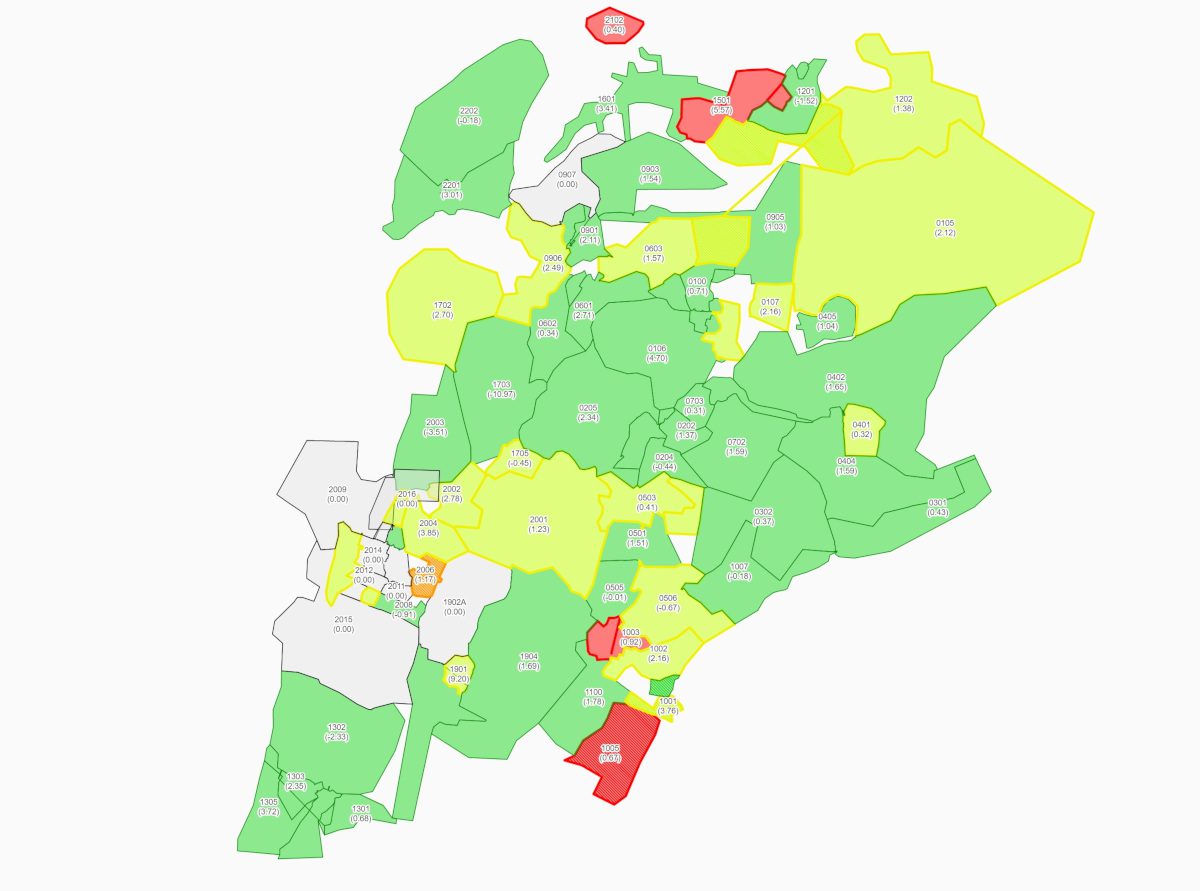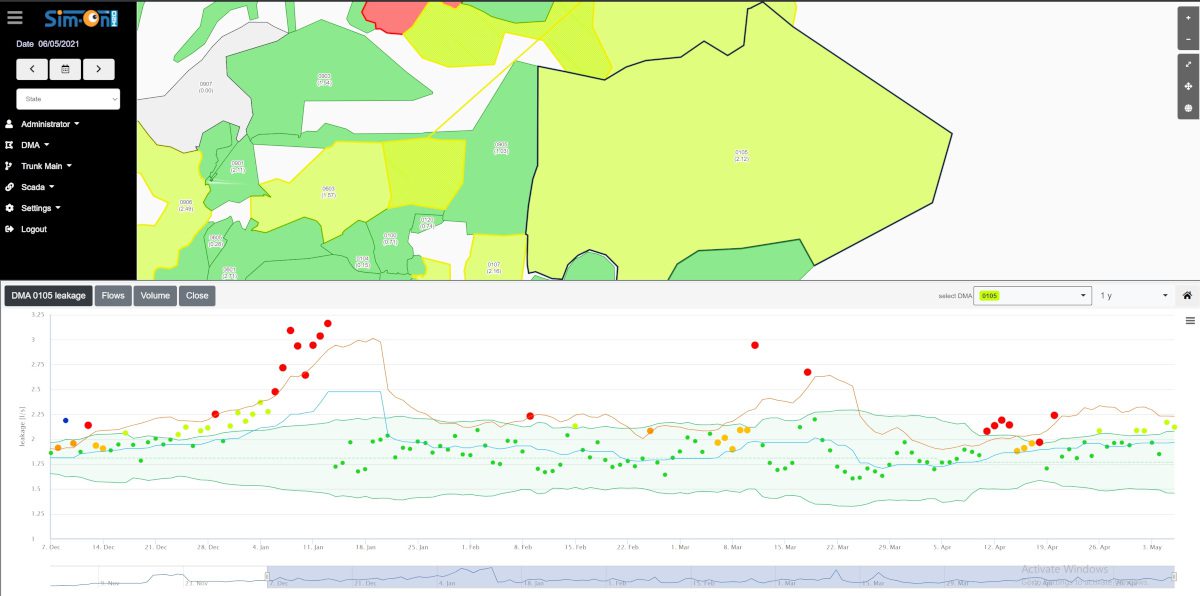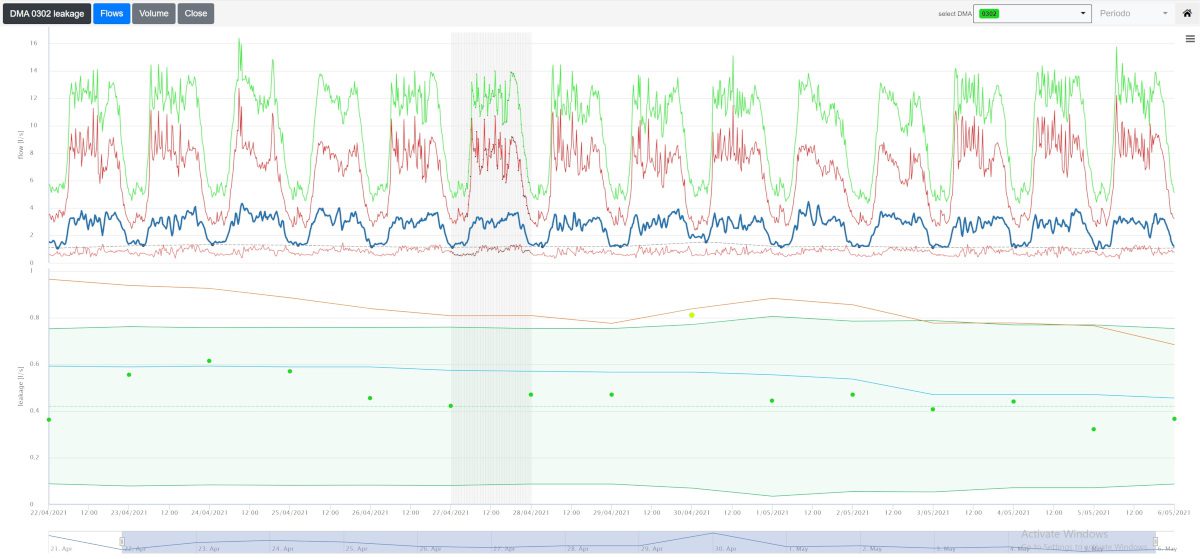
By identifying and targeting water leakages quickly at a local level, a new tool developed by engineering consultancy HR Wallingford will seemingly assist water companies to deliver on their regulatory targets to reduce reported leakage levels. Sim-OnTM Water combines multiple data sources and uses “the latest mathematical approaches” to detect leaks, so that they can be repaired rapidly, saving water.
The new tool, which focusses specifically on fast leak detection, has been designed to cut down time, effort and uncertainty in identifying leaks on the network, says the group. Separate algorithms have been developed with a focus on both District Metered and Trunk Main Areas (DMAs and TMAs). A leakage targeting dashboard, which is accessed via a web browser on desktops or mobiles, makes it easy for engineers and technicians to see areas where leakage is high, providing valuable information for deploying field resources. It improves teams’ response time to finding and therefore repairing leaks, lowering leakage levels, and saving time and money for water companies.
“We have been working with the water industry for many years, and it has become increasingly clear that there is a massive need for a tool such as Sim-OnTM Water,” says HR Wallingford’s Technical Director Andy Ball. “All around the world the difficulties of meeting the water needs of an increasing population against a backdrop of climate change and efforts to reduce abstraction mean there is a focus on reducing leakage. Sim-OnTM Water is a very targeted tool, specifically designed to identify leaks quickly – the key requirement of operational teams.
“Some of the great features of Sim-Onsup>TM Water are that it can produce alarms automatically, show informative maps and quickly display graphs referring to previous days’ data, so that a user can view performance across the catchment over time. The web browser interface makes Sim-Onsup>TM Water extremely easy to use so that operators can access and interrogate the system with very limited training. It is also easy for IT teams to install and manage.”

Benefiting from advances in technology that have made it easier to access network data, Sim-OnTM Water collects, combines and integrates data arriving from different sources, for example leakage software, SCADA systems and logger data. It draws on a sophisticated statistical algorithm that can judge in an automated way if the flow balance has deviated from its normal and expected trend. It can then assess how leakages have developed over time in each DMA or TMA. The results of the analyses are available promptly each day as data collection and calculations are made overnight. The leakage manager can then rapidly and appropriately prioritise resources to tackle the most urgent tasks first. The teams can see the data in the form of maps or time series graphs.
To develop the tool, HR Wallingford teamed up with water leakage expert Richard Chalk. His 20+ years of experience of water leakage operation and strategy informed the statistical approaches for night-time and daytime flow assessment, and he advised on the user layout interface.
“The minimum night flow assessment approach is fundamental to effective leakage management because there is less usage so the algorithms we have developed are more accurate,” explained Richard. “The user interface is important to allow teams to work quickly and efficiently. The product has turned out really well – it has great potential. I think Sim-OnTM Water is a tool that will help water companies really deliver the stretching regulatory demands and delivering their Outcome Delivery Incentive (ODI) targets.”

HR Wallingford says Sim-OnTM Water is already being successfully piloted in several international water utilities. The firm is also working on developing other functionalities that aim at pre-locating new potential leaks onto the map of the DMA.
Website: https://simondigitaltwin.com/sim-on-water







